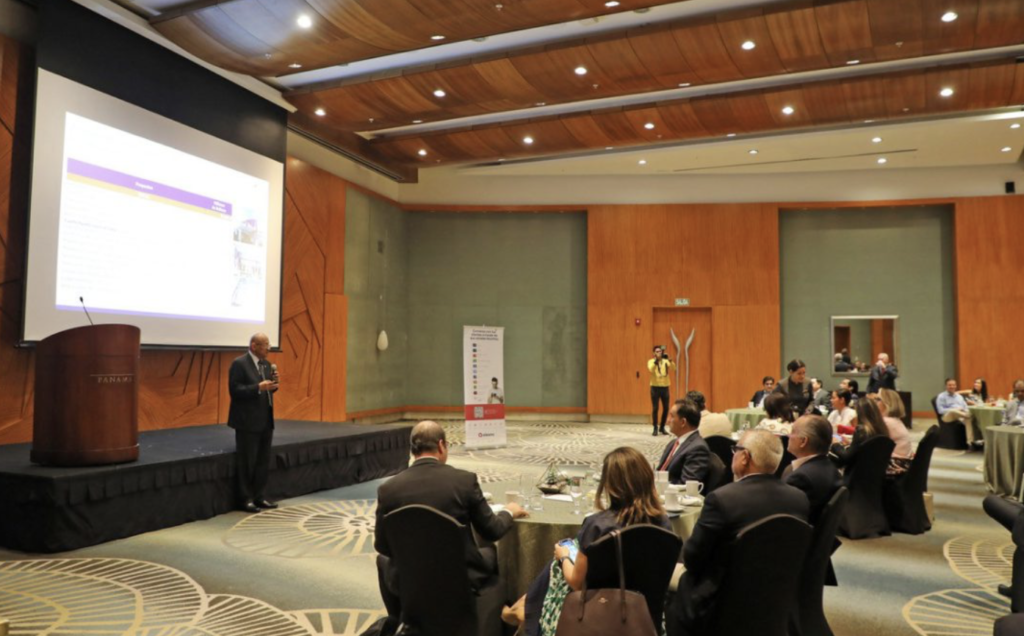
The Panamanian economy has had a strong recovery, generates formal jobs, poverty has been reduced and inflation is one of the casualties in the region, said the Minister of Economy and Finance, Héctor Alexander, during the Executive Meeting of the Chamber of Commerce, Industries and Agriculture of Panama (CCIAP).
The head of the Ministry of Economy and Finance (MEF), said that the country has just achieved full compliance with the 15 Actions of the Action Plan of the International Financial Action Task Force (FATF), which will help to continue in the right direction for the exclusion from the list of said organization; as well as the list of high-risk third countries with strategic deficiencies, in its regime for the the Caribbean, Europe and the world.
Alexander explained that Panama’s economy grew by 15.8% in 2021 and 10.8% in 2022, surpassing global and regional economic growth, driven by sectors such as trade that contributed 28.4%, construction did the same by 22.6%, while transport and logistics had 14.1%.
He stressed that Foreign Direct Investment continues to be key, since until the third quarter of 2022 it had increased by 49.3%. While the key role of the Public Private Association (PPP) has been reinforced in the development of infrastructures in projects such as the East and West Pan American Highway and the fourth Electric Transmission line, which are in the stage of pre-feasibility and feasibility.
In addition, the National Government is investing B /. 18,000 million in public infrastructure, such as the construction of the Metro, line 3 and extension of the 1, the tunnel under the Canal, fourth bridge over the Canal, electric transmission projects, road cleaning, water treatment plants, environmental sanitation, construction and remodeling of educational centers, sports infrastructure, Hospital City, among other investment projects. Without forgetting the program of defense of the productive fabric with support for MSMEs for B/.460 million.
On the other hand, 92% of the employment generated is formal. From September 2020 to April 2022, the employed population increased by 214,672 people (13.2%). While formal employment grew by 196,738 people (21.6%), the unemployment rate, meanwhile, decreased by 8.6%, from 18.5% in September 2020 to 9.9% in April 2022.
From January to October 2022, Labor contracts registered with the Ministry of Labor Development (MITRADEL) increased 8.8%, compared to the same period in 2021.
In addressing the issue of the banking sector, Alexander specified that the Panamanian financial system proved to be robust, because it resisted the effects of the Covid pandemic, and continues to capitalize and liquid. A sign of this is that, in April 2023, assets totaled B/.141,461 million, 4.0%, compared to the same month of the previous year.
Also on the same date they registered accumulated profits of B/. 937.8 million, 44.8% more than in the same month of 2022; and the liquidity index and the capital adequacy index are much higher than required by the Law.
“Although it seems impossible, Panama reduced general and extreme poverty during the pandemic. In 2021, the general poverty was 21% and the extreme was 9.5%, while the total poverty in Latin America was 32.3% and the extreme was 12%, according to the Economic Commission for Latin America and the Caribbean (ECLAC),” Alexander stressed.
Pointing out that public finances entered the path of fiscal consolidation, he stressed that Panama reached deficits similar to advanced economies, that the Fiscal Social Responsibility law maintains the modified caps, that the ratio of current expenditure / currentincome has improved, that the ratio of payroll expenditure / current expenditure has decreased. As well as the effect of the Central Government’s current savings has balanced current income and expenses.
“To this we must add the performance of the debt that is at 52.1% in the debt/GDP ratio, which places it in March 2023 in B/. 45, 898.7 million. In recent years, prudent debt management, along with transactions in the management of liabilities, made it possible to reduce the Weighted Average Cost of debt,” he said.
According to Alexander, all these points contribute to Panama being one of the countries with the lowest risk and best economic growth prospects for 2023 in Latin America and the Caribbean, as pointed out by the International Monetary Fund (IMF) with 5%, ECLAC with 4.6% and the World Bank with 5.7%, which guarantees that the country remains in the investment grade.